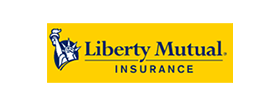Beginner’s Guide to Flood Insurance
When I ask clients if they would like to get a quote for flood insurance, I am almost always met with the same answer: “no, my home isn’t in a flood zone.” The truth is: Every home is in a flood zone.
You’re not required to purchase flood insurance if your home isn’t determined to be in a “high-risk zone.” But every home has the potential of flooding.
After talking to many clients, I’ve learned that most people fall into one of the following categories:
1. They think their homeowners or renters policy will cover any potential flooding.
2. They feel confident their home will never flood because they don’t live by a body of water.
3. They assume they don’t qualify for flood insurance because their home isn’t in a “high-risk zone.”
That tells me that the insurance industry hasn’t done a great job educating people about flood insurance.
Our mission here at Integrity First is: By operating with Integrity and focusing on education, we will change the perception of the insurance industry.
It’s important to understand your risks and your coverage, not just pay for insurance because you have to. If this blog can help even one person understand the risks of flooding and how flood insurance works, I’ll consider it a success.
Flood Facts:
- One inch of water in a home can cause more than $25,000 in damage.
- Over 20% of flood insurance claims are filed in areas that are not deemed “high-risk.”
- According to bankrate.com, 98 percent of U.S. counties have been impacted by a flooding event.
- Most flood policies have a 30-day waiting period to go into effect. So you can’t just wait until a big storm is coming to decide to get flood insurance.
- In order for the NFIP to consider an event a flood, water needs to either affect two adjacent properties or cover at least two acres of land.
- Flood insurance doesn’t cover everything, be sure to ask questions about what is and isn’t covered!
- You don’t have to own a home to get flood insurance, renters can also get flood insurance to cover their belongings.
- Wildfires can dramatically increase the risk of flooding. The landscape and ground condition changes that occur when there is a wildfire can lead to a higher risk of flash flooding and mudflows.
- Rates are determined by:
- Year the home insured structure was built
- Building occupancy (home, business, etc.)
- Number of floors
- Location of contents
- Flood zone type
- Location of the lowest floor in relation to the base flood elevation on FEMA flood map
- Deductible
- Amount of building and contents coverage
Frequently Asked Questions:
Doesn’t my home insurance cover damage from flooding?
No, flood damage is typically excluded on homeowners policies. There are a few insurance carriers that offer an optional endorsement to cover flooding. But it’s not an automatically included coverage.
If I live in a low-risk flood zone, do I really need flood insurance?
Even though flood insurance may not be required if your home is not in a “high-risk” flood zone, it’s still a good idea to have flood coverage. According to FEMA, “policyholders outside of mapped high-risk flood areas file over 20 percent of all NFIP flood insurance claims and receive one-third of federal disaster assistance for flooding.”
If my home is flooded, won’t federal disaster assistance pay for my damages?
Not necessarily. In order to receive federal disaster assistance, there has to be a Presidential Disaster Declaration. Presidential Disaster Declarations are issued in fewer than 50% of flood events, so it’s not a good way to plan for potential flood damage.
Even then, most assistance will come in the form of a loan, which will have to be paid back with interest. If you are lucky enough to receive a grant, it will likely not be enough to cover the damages incurred by flooding.
According to FEMA, the average FEMA disaster grant is just $5,000 per household, whereas the average flood insurance claim payment over the past 5 years was around $69,000.
Am I eligible for flood insurance?
Most likely, but it depends on your community.
In order to qualify for flood insurance through the National Flood Insurance Program (NFIP), your community must participate in the program. If your community doesn’t participate, you may be able to purchase flood insurance through a private company, but not through the government.
Can I get flood insurance if I’m renting a property?
Yes! As long as your community participates in the program, renters can also purchase flood insurance to cover your belongings. The same is true if you own a business that rents a commercial space.
Can’t I just wait until there is a big storm coming to get flood insurance?
You could, but your coverage would not go into effect in time. Most flood insurance policies have a 30-day waiting period, so your coverage would not be active until 30 days after you purchase the policy. By the time your coverage went into effect, the damage would likely already be done and wouldn’t be covered.
Common Flood Terms:
Base Flood Elevation (BFE): The elevation of surface water resulting from a flood that has a 1% chance of equaling or exceeding that level in any given year.
Federal Emergency Management Agency (FEMA): A federal agency created to help citizens prepare for, prevent, mitigate against and recover from domestic disasters including natural disasters and acts of terror.
Flood (as defined by FEMA):
- A general and temporary condition of partial or complete inundation of two or more acres of normally dry land area or of two or more properties (at least one of which is the policyholder’s property) from:
- Overflow of inland or tidal waters; or
- Unusual and rapid accumulation or runoff of surface waters from any source; or
- Mudflow; or
- Collapse or subsidence of land along the shore of a lake or similar body of water as a result of erosion or undermining caused by waves or currents of water exceeding anticipated cyclical levels that result in a flood as defined above.
Grade Elevation: The lowest or highest finished ground level that is immediately adjacent to the walls of the building.
National Flood Insurance Program (NFIP): The federal program put into place to regulate and provide flood insurance.
Participating Community: A community that FEMA has authorized the sale of flood insurance under the NFIP. The community must meet certain requirements to be eligible for flood insurance.
100-Year Flood: Refers to a flood event with a likelihood of 1% of occurring in any given year.
1000-Year Flood: Refers to a flood event with a likelihood of .1% of occurring in any given year.
Flood Zone: A geographical area shown on a Flood Hazard Boundary Map or a Flood Insurance Rate Map that reflects the potential severity or type of flooding in that area.
Notable Examples of “1,000-Year Floods” in the last 20 years:
There have been many catastrophic flood events all over the country just in the in the past 10-20 years. Everyone knows that tropical storms or hurricanes often bring catastrophic flooding. But land-locked states can experience disastrous floods as well. Below are a few examples and how those communities were impacted.
Middle Tennessee-May 2010
The following statistics come directly from the Severe Flooding May 2010 Disaster Declaration #FEMA-1909-DR After Action Report/Improvement Plan published July 6, 2011.
What happened?
- The worst of the flooding occurred between May 1-2, 2010 when the Nashville area had 13.57 inches of rain in a 36-hour period of time.
- The areas that had the most damage experienced what experts consider a “1000-year flood.” Meaning there is only a .1% chance of that flood happening in any given year.
What was the damage?
- 10,900 structures were damaged or destroyed
- Only 3,908 owners were insured for flood losses
- 10,000 people were displaced
- $2 Billion in private property damage
- An additional $120 Million in damage to public infrastructure
What was the recovery/aid process?
- 111,000 tons of debris removed
- 1,851 loans approved, totaling $93 Million
- As of 4/19/2011, grants distributed totaled $2.47 Million
- Davidson County federal housing assistance totaled $70 Million
Lasting Impacts:
- Many businesses had to close permanently, leaving many residents without jobs.
- According to the TN Department of Commerce & Insurance, even after the catastrophic flooding that Middle Tennessee experienced, less than 2% of Nashville residents and only 1.14% of residents across Tennessee carry flood insurance.
The total amount of assistance between loans, grants, and federal housing assistance only equals $164.47 Million, while the damage to private property was $2 Billion. Without donations or flood insurance, many families were left paying for the repairs or relocation out of pocket, while still being responsible for their mortgages and other bills.
Colorado Front Range (Boulder, Weld, and surrounding counties)- September 2013
What happened?
- In a span of 4 days, more than 17 inches of rainfall was recorded in Boulder County, with the worst of it being on 9/12/2013 when they got over 9 inches.
- The area impacted spanned approximately 4,500 square-miles
What was the damage?
According to the National Weather Service:
- 1,500 homes were destroyed and nearly 19,000 more were damaged
- 200 commercial buildings were destroyed and another 800 were damaged
- 30 state highway bridges were destroyed and 200 miles of roadway were damaged
- Estimated damage totaled approximately $2 Billion
- More than 3,000 people had to be rescued and another 11,000 were evacuated from their homes
What was the recovery/aid process?
According to FEMA’s case study regarding the 2013 floods:
- NFIP had 1,769 claims and paid $56.67 Million in flood claims
- Small Business Administration had 1,832 applicants and paid $91.17 Million
- Individual Assistance Program had 21,442 applicants dispersed $53.56 Million in aid
- My boat is already paid for and rarely used. Should I still invest in boat insurance?
- Wondering If Homeowners Insurance Is A Smart Investment? What to Know
- Commercial Insurance: Security Upgrades For An Office Setting
- The Difference Between Classic, Historic, Vintage, and Restored Automobiles
- Recreational Drone Insurance: Flying with Peace of Mind
- My boat is already paid for and rarely used. Should I still invest in boat insurance?
- Wondering If Homeowners Insurance Is A Smart Investment? What to Know
- Commercial Insurance: Security Upgrades For An Office Setting
- The Difference Between Classic, Historic, Vintage, and Restored Automobiles
- Recreational Drone Insurance: Flying with Peace of Mind
Sources:
Campisi, N. (2020). 6 Things Homebuyers Must Know About Flood Insurance | Bankrate. [online] Bankrate. Available at: https://www.bankrate.com/insurance/homeowners-insurance/things-homebuyers-must-know-about-flood-insurance/ [Accessed 13 Jan. 2020].
Floodsmart.gov. (2020). FloodSmart | Why Buy Flood Insurance. [online] Available at: https://www.floodsmart.gov/why/why-buy-flood-insurance [Accessed 14 Jan. 2020].
Halford, S., Shannon, C., Penney, K. and Mariscal, H. (2011). Severe Flooding May 2010 After Action Report and Improvement Plan for the Metropolitan Government of Nashville and Davidson County. [online] Nashville.gov. Available at: https://www.nashville.gov/Portals/0/SiteContent/OEM/docs/AARIP.pdf [Accessed 14 Jan. 2020].
Tn.gov. (2019). TDCI Debunks Flood Insurance Myths on Ninth Anniversary of Nashville Flood. [online] Available at: https://www.tn.gov/commerce/news/2019/5/1/tdci-debunks-flood-insurance-myths-on-ninth-anniversary-of-nashville-flood.html [Accessed 13 Jan. 2020].
National Weather Service. (n.d.). Floods in Colorado. [online] Available at: https://www.weather.gov/safety/flood-states-co [Accessed 14 Jan. 2020].
Floods.org. (2015). 2013 Colorado Floods Case Study. [online] Available at: http://www.floods.org/Files/Conf2015_ppts/B3_Bausch.pdf [Accessed 16 Jan. 2020].






















